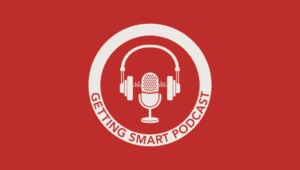Smart Cities: Columbus

Two promising developments stood out on two trips to Columbus last month. The first is the four term Mayor’s Education Commission focused on revitalizing Columbus City Schools. The second is first ring suburban districts charting the path forward.
Mayor Michael Coleman is spending his political capital trying to give Columbus kids a shot. “The mayor and business community want to affect HUGE changes in Columbus education,” said a veteran Ohio observer, “and the guy advising the mayor, Eric Fingerhut, is a former Congressman and Ohio higher-ed chancellor.” It’s great to see so much community support for better student outcomes in Columbus but odd and sad to see the district largely missing in action.
At a recent Commission meeting Brad Mitchell from Battelle for Kids reported on site visits to top performing systems. He noted that top performers were less metric-centric and more meaning-centric, that they feed and spread empowerment experiences and make learning visible. He reported that top sites “relationships define results,” the opposite of most of the U.S.
In my conversation with the Commission, I outlined 5 Reasons Columbus Should Make the Shift to Digital Learning and discussed A Digital Portfolio Approach including supporting struggling schools, opening new schools, and powering a digital layer of learning.
Suburban Progress. Dr. William Wise is superintendent of South-Western City Schools, a Columbus area district of 20,000 students. Under his leadership the district has seen significant improvement as a result of an MBA full of systems thinking, considering outliers, promoting disruptive innovation, monitoring for continuous improvement, and utilizing a balanced scorecard. The net result is a bunch of people awake and educating children for the real world.
Reynoldsburg City Schools is another diverse high challenge first ring district making great progress. Reynoldsburg Schools have been attracting rave reviews from the local press, KidsOhio earned an A+ on the state report card and met all 26 indicators–while spending about $3,000 less per pupil than city schools.
Superintendent Steve Dackin, a former principal in the district who did a stint at the state, took the helm weeks before voters were to weigh in on a bond issue to build a second high school. He recast the facilities proposal as an opportunity to think differently about high school. After voters approved the issue, he launched a comprehensive community engagement and design process. The process included rewriting the plan from two traditional comprehensive high schools to a new high school facility as one school, two campuses, four academies and a personalized pathway for every student. Five years later they are a great example of everything I’ve been advocating for: personalized learning environments, blended learning, early college, integrated studies, and work and community connections.
These two districts illustrate the benefits of sustained results-focused, community-engaged leadership thoughtfully balancing improvement and innovation. The contrast between floundering city schools and flourishing suburban districts is important (but not unusual). Compared to the city schools, the two suburban districts have created a framework–of thinking, dialog, and structure–that more easily incorporates innovation. It makes me wonder if there is a tipping point of challenge, size, and politics that disengages big city schools from their moorings and prevents thoughtful sustained leadership.
Metro & More. Metro, a STEM-focused early college high school, tops the list of cool schools in Columbus. It is a “personalized learning experience that prepares them for a connected world where math, science and technology are vitally important.” Metro opened in 2006 with support from KnowledgeWorks, Battelle, and The Ohio State University (OSU) and serves as the platform school for the Ohio STEM Learning Network of 12 STEM high schools. If students are meeting mastery-based expectations, they can matriculate into OSU or Columbus State courses for college credit. Metro Principal Aimee Kennedy is also a coach for the Literacy Design Collaborative. (See Writing Across the Curriculum With The LDC.)
Founding Metro principal Marcy Raymond, now leads the eSTEM Academy in Reynoldsburg. Raymond spots emerging opportunities like MOOCs and quickly incorporates them; eSTEM students can choose from several college level courses including math courses from Udacity. Last month Raymond showed the Education Commission a Udacity demo where students enjoyed individual pacing, more instructional resources, and, as one student said,” if you don’t do well on a test you can go back and correct your work.” (See The MOOC Goes to High School.)
Each academy at Reynoldsburg Capstone pathways is designed to bridge high school coursework, college and job preparation. In eSTEM, for example, three capstone options are offered in triple blocks potentially incorporating core courses such as ethics and technical writing, an AP credit and/or college credit bearing courses like political science and microeconomics, an internship, and a undergraduate-style research projects handful of projects. Imagine high school seniors (instead of coasting) taking a super block focused on energy, environment, and the economy. The combination of small academies and big blocks creates fertile ground for curricular, pedagogical, and relational innovations.
KIPP Central Ohio is “blessed with extraordinary leadership in Hannah Powell Tuney as Executive Director,” according to Fingerhut who also credits board chair judge Algenon Marbley (who is also co-chair of the Mayor’s Commission and serves on the OSU board) as well as the “over the moon philanthropic and civic leadership” from Abigail Wexner.
Columbus Collegiate Academy is a two campus high performing charter middle school that gets a lot of support from the business community in large part because of a terrific school leader named Andrew Boy.
The K-12 Graham Family of Schools promote experiential education. The network includes an early college high school at Ohio Dominican.
ECOT is a big homegrown virtual school. Reynoldsburg sponsors five community schools, including the Virtual Community School of Ohio. Statewide schools also include Ohio Virtual Academy and Ohio Connections Academy. Nexus Academy, a A Flex Plus School Model by Connections Education which opened last fall.
Columbus State Community College (CSCC) serves 30,000 students from a downtown campus, six satellite locations and online. CSCC is in the middle of several productive partnerships:
- Central Ohio Compact. Since 2011, working groups in the areas of access, curriculum alignment, and data collection have collaborated on developing a regional strategy for college completion and student success. At the spring 2012 summit meeting, K-12 and higher education regional leaders adopted the Lumina Foundation’s goal of 60% degree attainment in Central Ohio by 2025 and called for a Central Ohio Compact to promote teamwork and innovation across the region. Governing boards of colleges and K-12 districts throughout the region have adopted the attached resolution as a public commitment to the principles and will report out on progress at next month’s summit. http://www.cscc.edu/about/summit/
- Logistics ART. Designed to attract, train and retain qualified individuals in the field of logistics, the employer partnership was designed to train skilled workers that Central Ohio logistics companies need now. Funded by a $4.6 million Department of Labor grant, the program provides training tailored to meet the workforce needs of businesses at entry- to mid-level positions in distribution and logistics. http://www.cscc.edu/workforce/logistics/
- Preferred Pathway. The program offers Columbus State students guaranteed admission to OSU, and joint advising from Columbus State and Ohio State to provide academic support and a smooth transition.
- 9-14 Partnerships. Reynoldsburg High School students earn college credit at the onsite CCSS branch that includes classrooms, labs and a new Health Sciences lab. Gahanna Lincoln High School and CSCC share Clark Hall, an office building north of the airport.
- College Prep Math. A five-course, blended, developmental math program piloted in Reynoldsburg in 2011-12 is embedded in several area high schools.
Impact Orgs. Led by super advocate Mark Real, KidsOhio is the ‘go-to’ group for kids in Ohio. In addition to supporting Metro, Battelle supports the Ohio STEM Learning Network, the Tennessee STEM Innovation Network, and now the national STEMx network. eTech Ohio is charged with enhancing learning through the use of technology for Ohioans of all ages.
Fordham Institute is a national policy shop with roots in Ohio that advocates for high-quality options. Terry Ryan, Ohio lead, commissioned a recent Paul Hill paper, Steps in the Right Direction: Assessing “Ohio Achievement Everywhere” – the Kasich Plan.
Tech. Besides the iQity platform that powers ECOT, there’s not much edtech in Columbus. In fact, I didn’t even have Columbus on the list of 35 cities that we scored on our Innovation Index, so I was surprised to learn that Columbus was named a Top 7 Intelligent Community, the only US city on the list. “The Top7 communities of 2013 have made innovation – based on information and communications technology–the cornerstone of their economies and fostered economic growth through high-quality employment, while increasing the quality of life of their citizens,” said Lou Zacharilla, Intelligent Community Forum. The ICF noted that Columbus has America’s highest concentration of Fortune 1000 companies per capita.
ConnectOhio advocates for widespread access to the benefits of broadband. TechColumbus is the public-private partnership advancing Central Ohio’s innovation economy.
Conclusions. After a month of thinking about Central Ohio education, I see three lessons:
1. Of the 8 initial early college partners, KnowledgeWorks was the only one with a strong geographic commitment–and the partnerships have taken root creating a variety of accelerated college pathways. Working across institutional boundaries is difficult, but yields important student benefits.
2. Some organizations are better at incorporating innovation than others. One successful example is a combination of small size and a big frame–small enough for clear focus and powerful relationships, big enough to have the flexibility to do important work. Reynoldsburg High School offers two examples:
- It is a big school (2000 students) well connected to the community by small district leadership and the two locations and four academies make it more nimble and better equipped to address specific and emerging opportunities (e.g., early college partnerships, business internships,).
- Big integrated blocks make it easier to incorporate new delivery technologies and customized learning experiences.
3. There are obvious benefits of sustained community-connected district leadership but it is nearly impossible to sustain effective leadership of a large urban district. This suggests a new governance model and a portfolio approach to urban education challenges. Civic leadership for better education options is very encouraging and if sustained will yield results.
We will further explore these conclusions over the next few weeks. For more on Reynoldsburg, see these recent Getting Smart features:
- Four Strategies in Four Years that Will Transform a Community Forever
- Shaping Communities as the World’s Classrooms
Thanks to Tricia Moore and Karina Brown for their contributions.
K12 and Connections Education are Getting Smart Advocacy Partners.






0 Comments
Leave a Comment
Your email address will not be published. All fields are required.